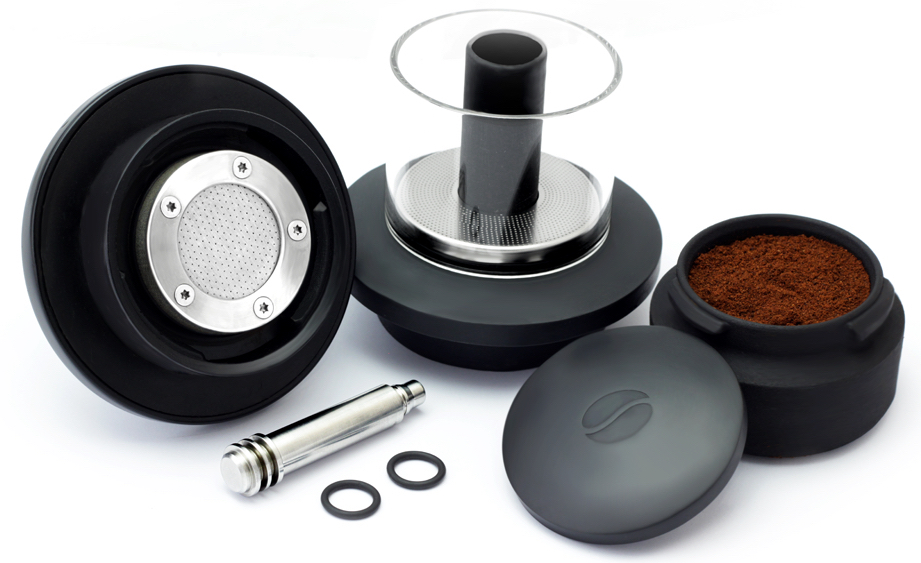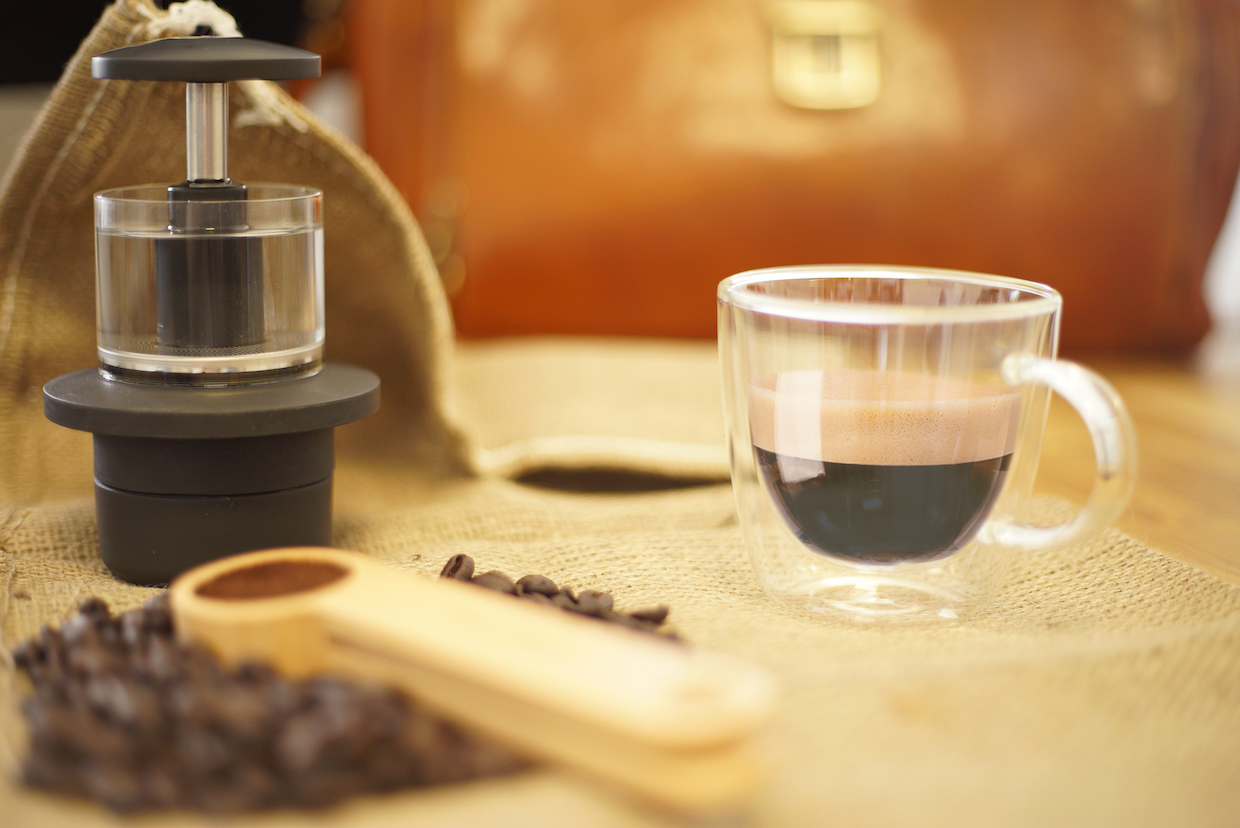
The Coffeejack has raised nearly $800,000 thus far on Kickstarter. All images courtesy of Hribarcain/Coffeejack
With every 10 pounds of downward pressure on the lever of a hydraulic car jack, you get about 400 pounds of lift. The feat of engineering at work in that mechanism is also now also in the Coffeejack, a cup-top espresso maker from London-based startup manufacturer Hribarcain.
Hribarcain co-founders Ashley Hribar-Green and Matthew Aston Cain were inspired by the powerful and relatively simple mechanics of the hydraulic car jack, figuring that the mere 130 psi — the equivalent of 9 bar — of pressure needed to brew a conventional espresso should be achievable with ease when using strong components built with precision out of quality materials.
Hribar-Green and Cain are both former colleagues of Sir James Dyson, having worked alongside the famed product designer in the “new product innovation department” at the Dyson company in England prior to setting up Hribarcain. Previous products by Hribarcain have included high-end pens, pencils and pocket knives.
This is the company’s first foray into coffee equipment, and to get it right they phased through no fewer than 392 Coffeejack prototypes. What resulted is a gadget housed in durable PPE plastic, standing only 4 inches tall and weighing 10 ounces.
With eight pumps of the Coffeejack’s patent-pending mechanism made of all stainless steel internal components, hot water inside a borosilicate glass chamber is driven through finely ground coffee.
The device’s potential has already attracted more than 7,000 backers in a Kickstarter campaign that has already amassed nearly $800,000.
As opposed to other devices that build up air pressure to be released all at once to drive the water, the hydraulic Coffeejack starts moving water instantly while also rapidly building pressure. Hribar-Green told Daily Coffee News this system offers advantages over air compression systems that are more susceptible to rapid pressure drops upon the release of an outlet valve.
While there is a momentary decline on the upward return stroke of the Coffeejack’s piston, the Coffeejack system contains a high-powered spring that minimizes the pressure differential at that phase, Hribar-Green said.
“After extensive testing, we found the hydraulic method provided a higher quality extraction over the 20-30 second extraction period than a conventional air compression system with a rapid pressure drop,” said Hribar-Green. “We disapprove of portable espresso makers who claim to reach pressures in excess of 10 bar. Coffee fanatics will know that this extracts the bitter notes of the grind and is not beneficial.”
Hribar-Green said he believes the main reason for claims by other devices to achieving higher pressure is for them to create an “average extraction pressure,” meaning the high start pressure and low ending pressure average out to an ideal number that is not what the coffee actually experiences.
“Boyle’s law states that if the volume of the pressure chamber does not also decrease in size, then the pressure will drop dramatically, meaning these systems begin at approximately 16 bar and end under 2 bar,” said Hribar-Green. “This is not the way to create the best extraction and we knew we could do something better.”
Typical use involves a 14-gram dose of coffee compressed by a built-in tamping feature upon locking the brew chamber into place. The device can be positioned directly on top of a mug or on a Coffeejack brewing stand for other vessels such as a demitasse. Users pour in hot water, put the cover and start pumping for a 20-30-second extraction during which time the brew water loses approximately 5-10% of its heat, depending on ambient room temperature.
“This is fractionally under the temperatures seen within heated group heads, but still within optimum temperature for a perfect extraction,” Hribar-Green said of the Coffeejack’s thermal loss. “The materials we use are highly insulated and therefore the water within encounters a minimal drop in temperature.”
Manual pressure profiling is possible by modulating one’s manual pumping, according to the company.
Shipping of market-ready Coffeejacks to crowdfunding preorders is projected to occur by May 2020, after which retail sales will launch at a price of roughly $120.
Howard Bryman
Howard Bryman is the associate editor of Daily Coffee News by Roast Magazine. He is based in Portland, Oregon.
Comment
1 Comment
Comments are closed.








Hopefully this works out and they are able to deliver. I’d love to have an espresso companion to my Aeropress.